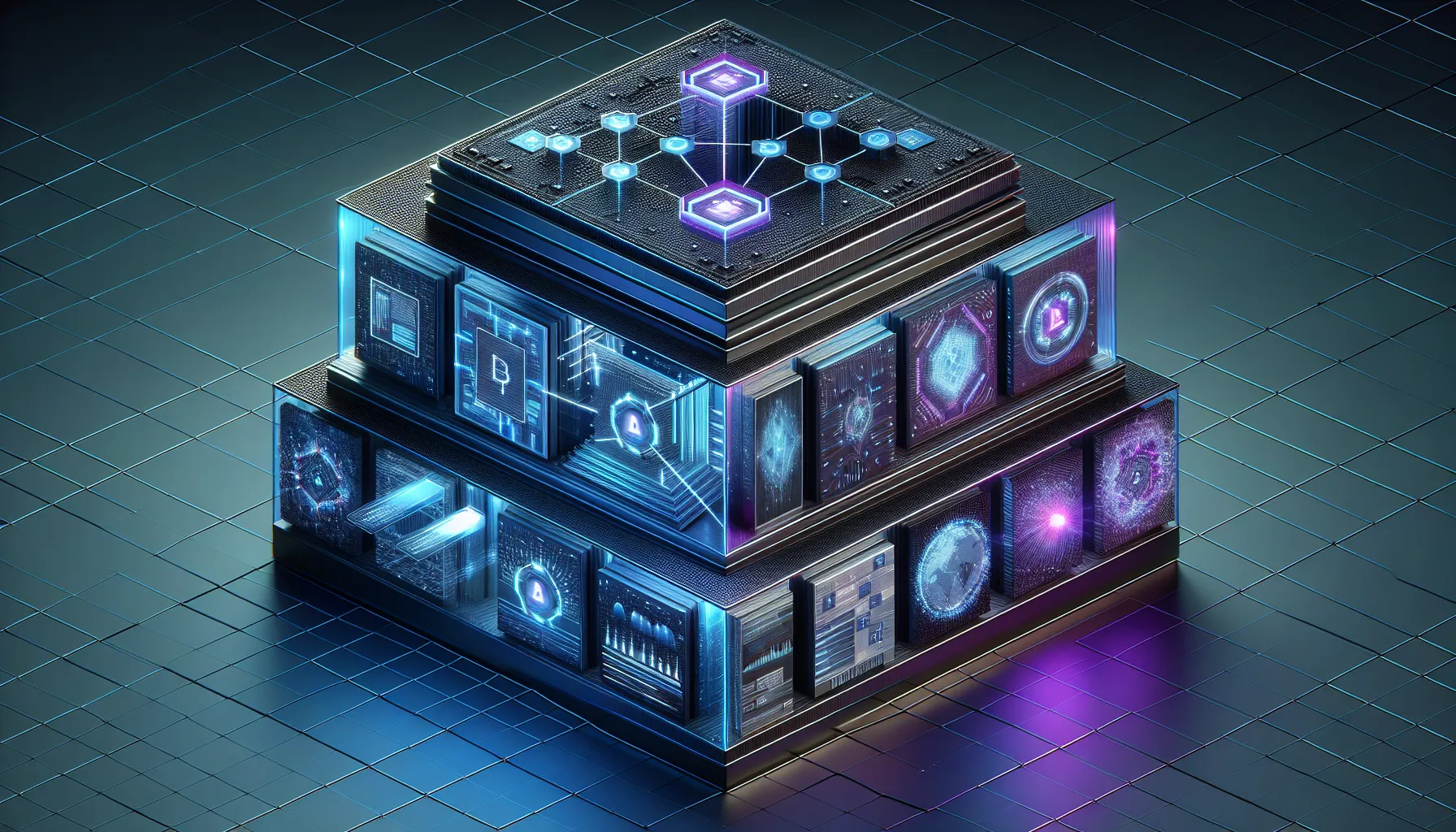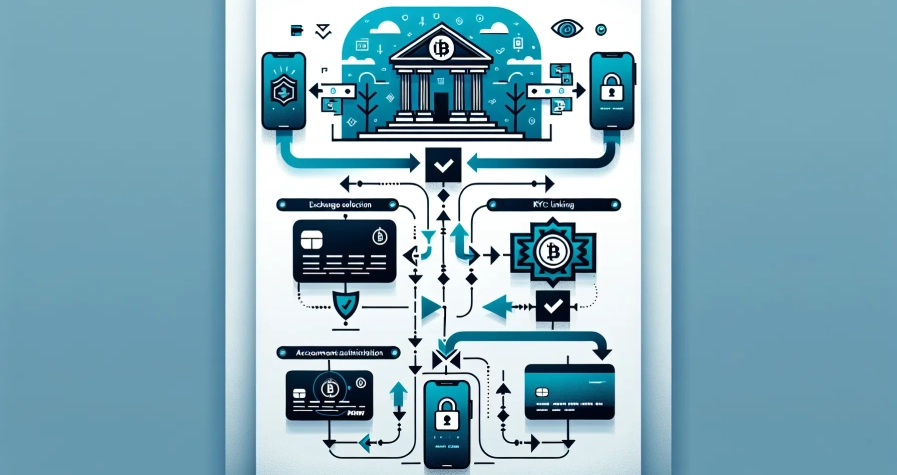Blockchain technology has evolved rapidly over the past decade, progressing from the foundational protocols of Bitcoin and Ethereum to sophisticated scaling solutions designed to handle mass adoption. Yet, as decentralised applications (DApps) grow more complex and user expectations rise, even Layer-2 solutions, once hailed as the answer to blockchain’s scalability woes, are beginning to show their limitations. Enter Layer-3 blockchains: application-specific protocols built atop Layer-2 networks, offering unprecedented customisation, interoperability, and performance tailored to the unique demands of individual applications.
Layer-3 represents the next evolutionary leap in blockchain architecture, promising to unlock use cases that were previously impractical or impossible. From seamless gaming experiences to enterprise-grade supply chain management, these specialised layers are poised to bridge the gap between blockchain’s potential and mainstream adoption. But what exactly are Layer-3 blockchains, how do they differ from their predecessors, and why are they generating such excitement in the crypto space? This article explores the architecture, functionality, and transformative potential of Layer-3 technology.
Key Takeaways
- Layer-3 blockchains are application-specific protocols built atop Layer-2 networks, offering unprecedented customisation and performance for individual decentralised applications.
- Unlike Layer-2 solutions that provide generalised scaling, Layer-3 blockchains grant each DApp its own dedicated environment, eliminating resource competition and network congestion.
- Layer-3 technology enables seamless cross-chain interoperability, allowing communication and asset transfers across multiple blockchain ecosystems without traditional bridge vulnerabilities.
- Gaming, metaverse platforms, and enterprise supply chain management are amongst the most promising real-world use cases for Layer-3 blockchains.
- Whilst Layer-3 blockchains offer transformative potential, challenges including deployment complexity, security considerations, and ecosystem fragmentation must be addressed for widespread adoption.
Understanding the Blockchain Layer Architecture

To grasp the significance of Layer-3 blockchains, one must first understand the layered structure that underpins modern blockchain ecosystems. Think of it as a building: each layer serves a distinct purpose, and the stability of upper floors depends entirely on the strength of those beneath.
Layer 1 forms the foundation, the base blockchain responsible for security, consensus, and immutable data storage. Networks like Bitcoin and Ethereum fall into this category, providing the bedrock upon which everything else is built. But, Layer-1 protocols face inherent trade-offs between decentralisation, security, and scalability, the infamous blockchain trilemma.
Layer 2 emerged as a response to Layer-1’s scalability bottlenecks. These solutions sit atop the base layer, processing transactions off-chain or in batches before settling them on Layer 1. Examples include rollups (such as Optimism and Arbitrum) and sidechains, which dramatically increase transaction throughput whilst reducing costs. Layer-2 inherits security from Layer 1 but offloads the computational heavy lifting.
Layer 3, then, is the application layer, a specialised tier designed for end-user DApps that demand bespoke features, enhanced performance, or cross-chain interoperability. Whilst Layer 2 provides generalised scaling for entire networks, Layer 3 focuses on application-specific customisation, enabling developers to build highly tailored solutions without congesting shared infrastructure. It’s the difference between a multi-lane motorway (Layer 2) and dedicated express lanes for specific vehicles (Layer 3).
What Are Layer-3 Blockchains?
Layer-3 blockchains are application-specific protocols constructed on top of Layer-2 solutions, designed to offer specialised features, customisation, and seamless interoperability that generic blockchain layers can’t efficiently provide. Unlike Layer 1 and Layer 2, which aim to serve broad user bases with general-purpose infrastructure, Layer 3 zeroes in on the unique requirements of individual DApps, whether that’s ultra-low latency for gaming, privacy for enterprise operations, or complex logic for decentralised finance (DeFi) protocols.
The core philosophy behind Layer 3 is simple: not every application needs the same infrastructure. A blockchain-based game processing millions of micro-transactions per second has vastly different requirements from a supply chain management system prioritising data privacy and auditability. Layer-3 solutions recognise this diversity and provide the flexibility to optimise accordingly.
How Layer-3 Blockchains Function
Layer-3 blockchains operate by leveraging the security and scaling benefits of Layer-2 networks whilst adding an additional tier of specialisation. They integrate off-chain computation, enhanced consensus mechanisms, and modular architecture to deliver dedicated throughput for each application.
Here’s how the mechanics typically work: a Layer-3 chain is deployed atop a Layer-2 protocol (which itself is secured by Layer 1). Transactions and computations occur on the Layer-3 chain, benefiting from application-specific rules and optimisations. Periodically, the Layer-3 chain settles its state to the underlying Layer 2, which in turn anchors to Layer 1 for final security guarantees. This cascading model allows each DApp to effectively run its own blockchain without sacrificing the security of the base layer.
Crucially, Layer-3 also enables interoperability between different Layer-2 networks. By functioning as a bridge or communication layer, Layer-3 protocols can help cross-chain transactions and data sharing, breaking down the silos that have long plagued blockchain ecosystems.
Key Differences Between Layer-2 and Layer-3 Solutions
Whilst Layer-2 and Layer-3 solutions might sound similar, they serve fundamentally different purposes and operate at different scales. Understanding these distinctions is key to appreciating why Layer 3 represents such a meaningful advancement.
| Feature | Layer 2 | Layer 3 |
|---|---|---|
| Purpose | Scalability for single chain | Specialisation, customisation |
| Scope | Network-wide | Application-specific |
| Interoperability | Limited (between L2 and L1) | Extensive (across multiple blockchains) |
| Use Cases | Payments, generic apps | Gaming, enterprise, DeFi, metaverse |
| Congestion | Still possible | Reduced: each DApp has its own chain |
Layer-2 solutions provide broad scaling benefits but remain vulnerable to congestion when popular applications compete for the same throughput. Layer 3, by contrast, grants each DApp its own dedicated environment, eliminating competition for resources. Also, Layer 2 typically focuses on a single blockchain ecosystem (e.g., Ethereum), whereas Layer 3 can help communication and asset transfers across multiple chains, fostering a truly interconnected Web3.
Why Layer-3 Blockchains Matter for the Future
The promise of blockchain technology has always been decentralisation, transparency, and user sovereignty. Yet, for all its potential, blockchain has struggled with user experience, cost, and flexibility, barriers that have kept mainstream adoption frustratingly out of reach. Layer-3 blockchains directly address these pain points, positioning themselves as the critical infrastructure needed to bring blockchain into everyday life.
Enhanced Scalability and Performance
Scalability remains blockchain’s Achilles’ heel. Even with Layer-2 improvements, network congestion during peak usage can drive up transaction fees and slow confirmation times. Layer-3 blockchains tackle this by processing transactions off-chain or on dedicated application-specific chains, drastically reducing latency and increasing throughput.
Because each DApp operates on its own Layer-3 chain, it doesn’t compete with other applications for block space or bandwidth. A viral NFT mint on one platform won’t slow down a DeFi protocol on another. This isolation not only boosts performance but also makes costs predictable, enabling developers to offer consistent user experiences regardless of broader network activity.
Also, Layer-3 chains can carry out custom consensus mechanisms optimised for their specific use case. A gaming application might prioritise speed over decentralisation, using a lighter consensus model, whilst an institutional financial application could emphasise security and auditability. This flexibility is impossible on shared Layer-1 or Layer-2 infrastructure.
Application-Specific Customisation
One-size-fits-all solutions rarely fit anyone perfectly. Layer-3 blockchains empower developers to tailor every aspect of their blockchain environment, governance models, privacy settings, transaction rules, and more, to match their application’s unique requirements.
For instance, a healthcare DApp might require strict data privacy and compliance with regulations like GDPR, implementing zero-knowledge proofs and permissioned access at the protocol level. A decentralised gaming platform, on the other hand, could prioritise speed and low fees, enabling micro-transactions for in-game purchases without burdening users with prohibitive costs.
This customisation extends to governance as well. Layer-3 chains can experiment with novel voting mechanisms, tokenomics, and community structures without affecting the broader ecosystem. It’s a sandbox for innovation, allowing developers to push boundaries and iterate rapidly.
Real-World Use Cases for Layer-3 Technology
Layer-3 blockchains aren’t just theoretical constructs, they’re already enabling practical applications that were previously unfeasible on earlier blockchain layers. From immersive gaming experiences to enterprise-grade solutions, Layer 3 is opening doors to entirely new possibilities.
Gaming and Metaverse Applications
Blockchain gaming has long been touted as a killer app for Web3, but technical limitations have held it back. High transaction fees, slow confirmation times, and network congestion make for frustrating player experiences. Layer-3 blockchains solve these issues by providing high-speed, low-cost environments specifically designed for gaming.
In a Layer-3 gaming ecosystem, every in-game action, whether trading items, battling opponents, or exploring virtual worlds, can be processed almost instantly with negligible fees. Players maintain true ownership of their assets via NFTs, but without the clunky, expensive transactions that plagued earlier blockchain games.
Metaverse platforms benefit similarly. Virtual worlds require constant, real-time interactions and asset transfers between users. A Layer-3 chain can handle the massive throughput needed for seamless metaverse experiences, enabling everything from virtual real estate transactions to complex social interactions, all whilst maintaining the security and ownership guarantees of blockchain technology.
Enterprise and Institutional Solutions
Enterprises have been cautious about adopting public blockchains, citing concerns about privacy, scalability, and compliance. Layer-3 blockchains offer a compelling middle ground: the transparency and immutability of blockchain with the customisation and control enterprises demand.
Supply chain management is a prime example. A Layer-3 chain can track products from manufacture to delivery, providing immutable records whilst keeping sensitive business data private through permissioned access or cryptographic techniques. Each stakeholder in the supply chain, manufacturers, distributors, retailers, can interact on the same chain without exposing proprietary information.
Financial institutions are also exploring Layer-3 for cross-border payments, securities settlement, and identity management. These applications require regulatory compliance, auditability, and integration with existing systems, features that can be baked into a Layer-3 protocol without compromising the underlying security of Layer 1 and Layer 2.
Notable Layer-3 Projects and Implementations
Whilst Layer-3 technology is still in its relative infancy, several projects are pioneering this space, demonstrating the practical viability and diverse applications of this emerging layer.
Many of the leading Layer-3 implementations remain at the proof-of-concept or early deployment stage, reflecting the cutting-edge nature of the technology. Platforms focused on gaming and metaverse applications are amongst the most visible, leveraging Layer-3 architecture to deliver the performance and user experience these demanding use cases require.
Interoperability protocols represent another significant category of Layer-3 development. These projects aim to seamlessly link various Layer-2 networks, enabling cross-chain asset transfers, data sharing, and communication without the security risks or complexity of traditional bridges. By operating at Layer 3, these protocols can provide a unified interface across multiple blockchain ecosystems, bringing the fragmented world of Web3 closer to the interoperable vision many advocates have long championed.
DeFi protocols are also beginning to experiment with Layer-3 solutions, particularly for complex financial instruments that require high throughput and customised logic. These implementations demonstrate how Layer 3 can support sophisticated applications that push the boundaries of what’s possible on general-purpose blockchains.
As the technology matures and developer tooling improves, expect to see an explosion of Layer-3 projects across diverse verticals, each leveraging the unique advantages of application-specific blockchain architecture.
Challenges Facing Layer-3 Adoption
For all their promise, Layer-3 blockchains aren’t without challenges. The road to widespread adoption will require overcoming significant technical, security, and ecosystem hurdles.
Complexity sits at the top of the list. Deploying and managing a Layer-3 chain demands sophisticated technical expertise. Developers must navigate the intricacies of integrating with Layer-2 protocols, implementing custom consensus mechanisms, and ensuring proper state settlement. This complexity can be daunting, particularly for smaller teams or projects with limited resources. Developer tooling and documentation remain in early stages, making the barrier to entry higher than for deploying on established Layer-1 or Layer-2 platforms.
Security concerns naturally accompany additional protocol layers. Each layer introduces new potential attack vectors and trust assumptions. A vulnerability in a Layer-3 implementation could compromise user funds or data, even if the underlying layers remain secure. Auditing and testing Layer-3 systems requires specialised knowledge, and the relative novelty of the technology means best practices are still evolving.
Fragmentation poses an ecosystem-level risk. If every application launches its own Layer-3 chain without proper interoperability standards, the blockchain space could splinter into isolated islands, undermining the composability and network effects that make DeFi and Web3 powerful. Coordination and standardisation efforts will be crucial to ensure Layer-3 enhances rather than fractures the ecosystem.
Finally, there’s the question of necessity. For many applications, Layer-2 solutions may be entirely sufficient. Layer-3 adds overhead and complexity that only makes sense when the benefits, customisation, dedicated throughput, specialised features, clearly outweigh the costs. Determining which applications genuinely need Layer 3 versus those that can thrive on simpler infrastructure remains an ongoing conversation in the blockchain community.
Conclusion
Layer-3 blockchains represent a transformative advancement in the evolution of blockchain technology, offering the foundation for highly tailored, scalable, and interoperable applications that earlier layers simply can’t support. By enabling application-specific customisation whilst maintaining the security guarantees of underlying protocols, Layer 3 unlocks use cases ranging from immersive gaming experiences to enterprise-grade institutional solutions.
The architecture addresses critical limitations of Layer 1 and Layer 2, congestion, inflexibility, and limited interoperability, by providing dedicated environments where each DApp can optimise for its unique requirements. This specialisation doesn’t just improve performance: it fundamentally expands what’s possible in decentralised systems, bringing blockchain closer to the mainstream adoption that has long seemed tantalizingly out of reach.
Yet, challenges remain. Complexity, security considerations, and the risk of ecosystem fragmentation must be carefully managed as Layer-3 technology matures. Widespread adoption will depend on the development of robust tooling, standardisation efforts, and a clear understanding of when Layer 3 provides genuine value over simpler alternatives.
As the blockchain space continues to evolve, Layer-3 solutions are poised to play a pivotal role in shaping the next generation of decentralised applications. For developers, investors, and users alike, understanding this emerging layer isn’t just about keeping pace with technological trends, it’s about recognising the infrastructure that will underpin the decentralised future.
Frequently Asked Questions
What is a Layer-3 blockchain and how does it differ from Layer-2?
Layer-3 blockchains are application-specific protocols built atop Layer-2 networks, offering bespoke customisation for individual DApps. Whilst Layer-2 provides network-wide scalability, Layer-3 delivers dedicated environments tailored to unique application requirements, eliminating resource competition and enabling extensive cross-chain interoperability.
Why are Layer-3 blockchains considered the next big thing in crypto?
Layer-3 blockchains address critical limitations by providing dedicated throughput, custom consensus mechanisms, and application-specific features. This enables previously impractical use cases like seamless blockchain gaming, enterprise solutions, and complex DeFi protocols, positioning Layer-3 as essential infrastructure for mainstream blockchain adoption.
How do Layer-3 blockchains improve gaming and metaverse experiences?
Layer-3 chains process in-game actions almost instantly with negligible fees by providing high-speed, low-cost environments designed specifically for gaming. Players maintain true asset ownership via NFTs whilst enjoying real-time interactions without the congestion and high transaction costs that plagued earlier blockchain games.
Can Layer-3 blockchains work with multiple Layer-2 networks simultaneously?
Yes, Layer-3 protocols can function as bridges between different Layer-2 networks, enabling cross-chain asset transfers and data sharing. This interoperability breaks down blockchain silos and creates a unified interface across multiple ecosystems, bringing the fragmented Web3 landscape closer to true interconnectedness.
What are the main challenges facing Layer-3 blockchain adoption?
Key challenges include technical complexity requiring sophisticated expertise, security concerns from additional protocol layers, potential ecosystem fragmentation without proper standards, and determining when Layer-3’s benefits genuinely outweigh the overhead compared to simpler Layer-2 solutions for specific applications.
Are Layer-3 blockchains more expensive to deploy than Layer-2 solutions?
Deploying Layer-3 chains typically involves higher initial complexity and technical requirements, demanding specialised knowledge of Layer-2 integration and custom consensus implementation. However, operational costs can be lower due to dedicated resources eliminating competition, though developer tooling remains in early stages compared to established platforms.









